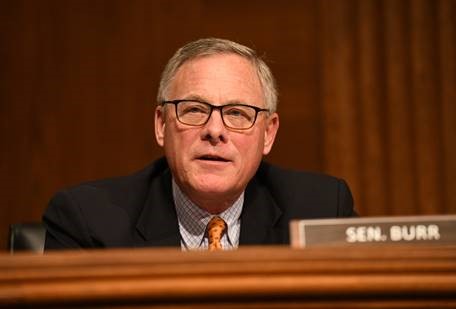Burr: Our COVID-19 Response Must Leverage Technology to Improve Decision Making, Address Public Health Disparities
Senate HELP Committee examines pandemic response and recovery in underserved communities
Today, the Senate Health, Education, Labor and Pensions (HELP) Committee held a hearing entitled, “Examining Our COVID-19 Response: Improving Health Equity and Outcomes by Addressing Health Disparities.” This is the third hearing on the coronavirus pandemic the Committee has held in the 117th Congress.
In his prepared opening remarks, Ranking Member Richard Burr (R-NC) acknowledged the shortfalls in the nation’s pandemic response in underserved communities, including seniors, children, Americans with disabilities, and rural communities. Additionally Ranking Member Burr underscored the importance of maintaining flexibility as part of the nation’s emergency response and leveraging new technology to better analyze, prepare for, and respond to the next public health emergency.
WATCH: Ranking Member Burr delivers opening remarks before the Committee’s third coronavirus hearing
Excerpts:
“The disproportionate impact of COVID-19 on minority populations, people in rural areas, and others has revealed cracks in our health care system that persist despite efforts to improve care... This pandemic has given us another perspective on these challenges and demonstrates a need to redouble our work to address the underlying problems facing these and other affected populations. Each response requires the ability to identify the problems local communities will face, strong leadership to recognize the best solutions, and an ability to leverage the right approaches and technology to execute those changes.
“With each emergency response, we learn about the ways each threat affects Americans differently and have adjusted our laws and plans accordingly. That is why we designed a response framework that is flexible – you never know quite how a new infectious disease or a natural disaster may impact us until it is on the ground and we are forced to respond. For example, during the last PAHPA [Pandemic and All Hazards Preparedness Act] reauthorization, Senator Casey and I included new advisory committees to identify the specific needs of our seniors and Americans with disabilities during emergencies…
“We have also made changes to the PAHPA statute to improve the development of countermeasures to meet the needs of different populations, and made sure we wrote it in a way that allowed maximum flexibility to respond to effected populations.
“This virus has also compounded existing challenges that many communities—including rural, racial and ethnic minority, and low-income populations—face. These differences underscore the importance of maintaining flexibility as part of a public health response so that the state and local government can most effectively reach those in their communities most at risk for a particular public health threat.
“The novel coronavirus has again shown us that we cannot fully anticipate the ways in which a threat will affect different communities across the country. We have utilized new technologies throughout the response to better understand just how the virus takes its toll and to do something about it. The FDA has provided greater flexibility in clinical trial design, working with drug developers to enhance enrollment in clinical trials in ways that reach more communities by deploying remote technology that allows for patient monitoring without traveling to a major hospital. Manufacturers have gotten creative with targeting their trials to those who stand to benefit the most from a drug, with one developer creating mobile units to bring their COVID therapeutics directly to nursing homes as soon as they found an outbreak of the virus. Mobile health units have also been deployed to bring testing and vaccines to areas that need these countermeasures, and partnerships with historically black colleges and universities improved outreach to racial and ethnic minority populations on testing, participation in clinical trials, and providing information on vaccines and ways to prevent COVID-19.
“Now, as we look toward the weeks and months ahead, this ingenuity needs to continue. Our response efforts must leverage technology to improve our surveillance capabilities and inform our public health decision making. And, our policies should encourage the incorporation of new technology, strategies, and partnerships to solve old problems and challenges.”
To read Ranking Member Burr’s full prepared opening statement, click here.
